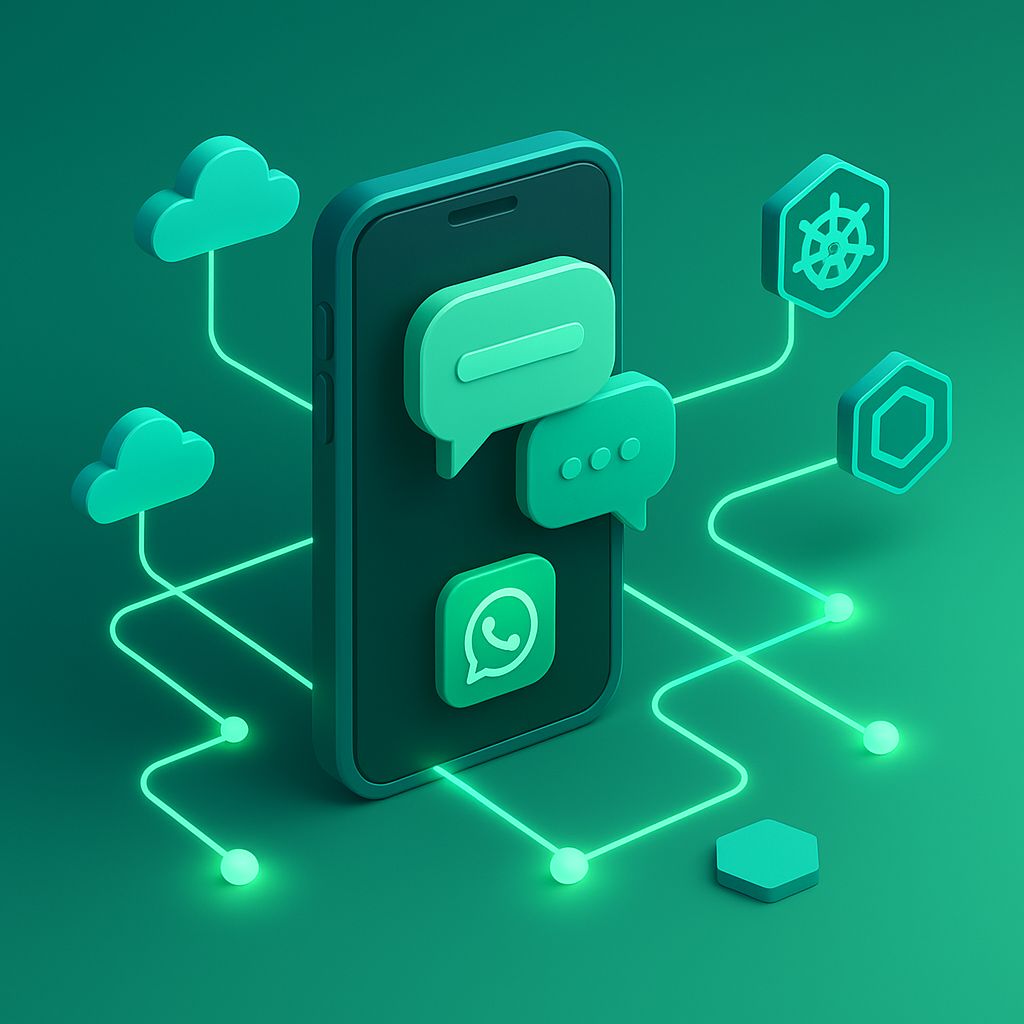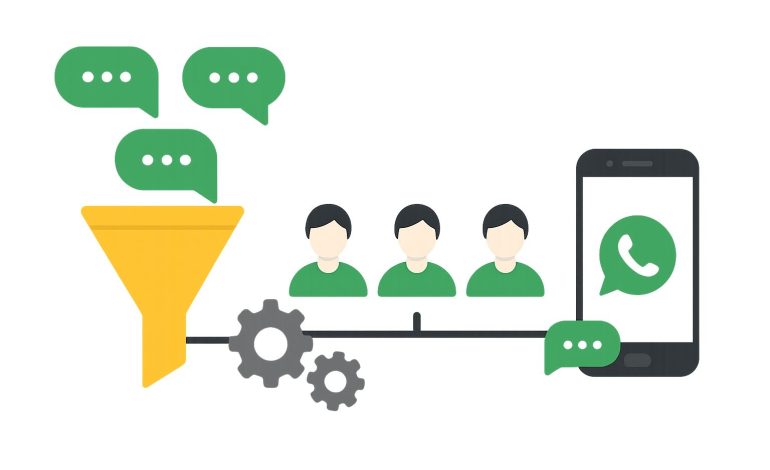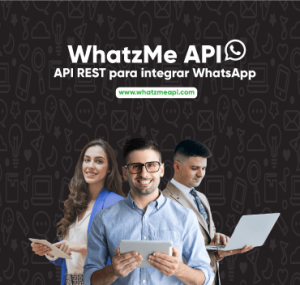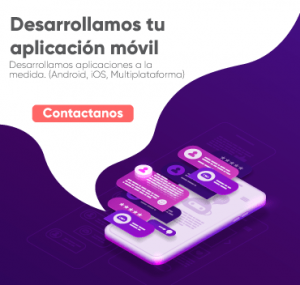Activa tu API REST + Chatbot para WhatsApp en minutos: respuestas automáticas, envíos masivos y flujos inteligentes. ¿Te muestro un demo? 🚀ACTIVAR
¿Quieres correr WhatzMeAPI en Kubernetes de forma robusta y escalable? Aquí tienes una guía práctica enfocada en los componentes típicos de WhatzMeAPI (webhook inbound, API REST, workers de envío, orquestador de flujos/chatbot, cache/cola y base de datos), usando Pods, Deployments y Services como pilares.
1) Arquitectura de referencia para WhatzMeAPI en K8s
Componentes lógicos
- Inbound Webhook: recibe mensajes/eventos (HTTPS público).
- Core API: endpoints REST para clientes, auth, planes, webhooks de salida.
- Dispatcher/Workers: envío saliente, reintentos, rate-limit/backoff.
- Chatbot/Flows: orquestación de diálogos, plantillas y NLP si aplica.
- Cache/Queue: Redis/RabbitMQ/Streams para deduplicación y trabajo asíncrono.
- DB: MongoDB/MySQL (gestionado o externo al cluster).
- Observabilidad: Prometheus/Grafana + logs/trace.
Patrones clave
- Stateless para API/webhook/workers (fáciles de escalar).
- Idempotencia (messageId/eventId en Redis) para evitar duplicados.
- Backpressure (colas + HPA/KEDA) para absorber picos.
- Rate limiting por cuenta/instancia para cumplir políticas del proveedor.
2) Pods: unidad mínima (por microservicio)
Buenas prácticas
- 1 proceso principal por contenedor.
- Requests/Limits de CPU/Mem para evitar OOM/Throttle.
- Probes (liveness/readiness) con health endpoints.
- Variables de entorno via ConfigMaps/Secrets (tokens, claves).
Ejemplo Pod (esquema) – evita usar Pods sueltos en producción; usa Deployments
apiVersion: v1
kind: Pod
metadata:
name: wz-inbound-webhook-pod
labels: { app: wz-inbound }
spec:
containers:
- name: inbound
image: your-registry/wz-inbound:1.0.0
ports: [{ containerPort: 8080 }]
env:
- name: APP_ENV
valueFrom: { configMapKeyRef: { name: wz-config, key: APP_ENV } }
- name: API_TOKEN
valueFrom: { secretKeyRef: { name: wz-secrets, key: API_TOKEN } }
readinessProbe:
httpGet: { path: /health/ready, port: 8080 }
initialDelaySeconds: 3
periodSeconds: 5
livenessProbe:
httpGet: { path: /health/live, port: 8080 }
initialDelaySeconds: 10
periodSeconds: 10
resources:
requests: { cpu: "200m", memory: "256Mi" }
limits: { cpu: "500m", memory: "512Mi" }
3) Deployments: escalado y rollouts sin dolor
Crea un Deployment por componente (inbound, api, worker, chatbot). Activa rolling updates, historial de revisiones y HPA.
Deployment – Inbound Webhook
apiVersion: apps/v1
kind: Deployment
metadata:
name: wz-inbound
spec:
replicas: 3
revisionHistoryLimit: 5
strategy:
type: RollingUpdate
rollingUpdate: { maxSurge: 1, maxUnavailable: 0 }
selector:
matchLabels: { app: wz-inbound }
template:
metadata:
labels: { app: wz-inbound }
spec:
containers:
- name: inbound
image: your-registry/wz-inbound:1.1.0
ports: [{ containerPort: 8080 }]
envFrom:
- configMapRef: { name: wz-config }
- secretRef: { name: wz-secrets }
readinessProbe:
httpGet: { path: /health/ready, port: 8080 }
livenessProbe:
httpGet: { path: /health/live, port: 8080 }
resources:
requests: { cpu: "200m", memory: "256Mi" }
limits: { cpu: "600m", memory: "512Mi" }
Deployment – Worker (Dispatcher de envíos)
apiVersion: apps/v1
kind: Deployment
metadata:
name: wz-dispatcher
spec:
replicas: 2
selector:
matchLabels: { app: wz-dispatcher }
template:
metadata:
labels: { app: wz-dispatcher }
spec:
containers:
- name: worker
image: your-registry/wz-worker:2.0.0
args: ["--mode=dispatcher", "--concurrency=8"]
envFrom:
- configMapRef: { name: wz-config }
- secretRef: { name: wz-secrets }
resources:
requests: { cpu: "250m", memory: "256Mi" }
limits: { cpu: "1", memory: "1Gi" }
Comandos útiles
kubectl apply -f wz-inbound.yaml
kubectl rollout status deployment/wz-inbound
kubectl set image deployment/wz-inbound inbound=your-registry/wz-inbound:1.1.1
kubectl rollout undo deployment/wz-inbound
kubectl scale deployment/wz-dispatcher --replicas=6
4) Services: red estable y balanceo
- ClusterIP para comunicación interna (inbound → api, api → chatbot).
- LoadBalancer/Ingress para exponer el Webhook y/o API públicamente.
- Headless si necesitas discovery directo (menos común aquí).
Service interno (ClusterIP) – Core API
apiVersion: v1
kind: Service
metadata:
name: wz-api-svc
spec:
selector: { app: wz-api }
ports:
- name: http
port: 80
targetPort: 8080
type: ClusterIP
Ingress TLS – Webhook público
apiVersion: networking.k8s.io/v1
kind: Ingress
metadata:
name: wz-inbound-ing
annotations:
cert-manager.io/cluster-issuer: letsencrypt
spec:
tls:
- hosts: [ "webhook.whatzmeapi.com" ]
secretName: wz-webhook-tls
rules:
- host: webhook.whatzmeapi.com
http:
paths:
- path: /
pathType: Prefix
backend:
service:
name: wz-inbound-svc
port: { number: 80 }
Consejo: si estás en cloud (EKS/GKE/AKS), usa Ingress Controller (NGINX/ALB) + cert-manager para TLS automático.
5) Configuración y secretos (multi-tenant)
ConfigMap + Secret
apiVersion: v1
kind: ConfigMap
metadata: { name: wz-config }
data:
APP_ENV: "prod"
RATE_LIMIT_PER_MINUTE: "45"
REDIS_URL: "redis://wz-redis:6379"
---
apiVersion: v1
kind: Secret
metadata: { name: wz-secrets }
type: Opaque
stringData:
PROVIDER_TOKEN: "<token>"
DB_PASSWORD: "<db-pass>"
Env en un Deployment
env:
- name: RATE_LIMIT_PER_MINUTE
valueFrom: { configMapKeyRef: { name: wz-config, key: RATE_LIMIT_PER_MINUTE } }
- name: PROVIDER_TOKEN
valueFrom: { secretKeyRef: { name: wz-secrets, key: PROVIDER_TOKEN } }
6) Autoscaling (HPA/KEDA) y picos de tráfico
- HPA por CPU/RAM o métricas personalizadas (requests/seg, lag de cola).
- KEDA si escalas por profundidad de colas (Redis/RabbitMQ/Kafka).
HPA por CPU – Inbound
apiVersion: autoscaling/v2
kind: HorizontalPodAutoscaler
metadata:
name: wz-inbound-hpa
spec:
scaleTargetRef:
apiVersion: apps/v1
kind: Deployment
name: wz-inbound
minReplicas: 3
maxReplicas: 15
metrics:
- type: Resource
resource:
name: cpu
target:
type: Utilization
averageUtilization: 60
7) Resiliencia: idempotencia, reintentos y backoff
- Deduplicación: guarda
messageId/eventIden Redis con TTL (p.ej., 24h). - Reintentos con backoff exponencial (p.ej., 1s, 2s, 4s, … máx. 5 intentos).
- DLQ (cola de muertos) para mensajes no procesables.
- PDB y anti-affinity** para alta disponibilidad durante mantenimientos.
PodDisruptionBudget
apiVersion: policy/v1
kind: PodDisruptionBudget
metadata:
name: wz-inbound-pdb
spec:
minAvailable: 2
selector:
matchLabels: { app: wz-inbound }
8) Observabilidad y trazas
- Logs estructurados (JSON) → Fácil de indexar/filtrar por
tenantId,messageId. - Métricas: peticiones/seg, latencias p50/p95/p99, tasa de errores, cola en curso.
- Tracing: OpenTelemetry (propaga
traceparenten llamadas internas).
kubectl logs deploy/wz-inbound -f
kubectl top pods
kubectl get events --sort-by=.lastTimestamp
9) Seguridad y cumplimiento
- RBAC mínimo y Namespaces por ambiente/cliente si aplica.
- Secrets cifrados en reposo + rotación.
- NetworkPolicies (deny-by-default) abriendo solo lo necesario.
- Supply chain: imágenes firmadas (Cosign), escaneo (Trivy/Grype).
NetworkPolicy – permitir solo Ingress Controller → Inbound
apiVersion: networking.k8s.io/v1
kind: NetworkPolicy
metadata:
name: wz-inbound-allow-ingress
spec:
podSelector: { matchLabels: { app: wz-inbound } }
policyTypes: ["Ingress"]
ingress:
- from:
- podSelector: { matchLabels: { app.kubernetes.io/name: ingress-nginx } }
ports: [{ protocol: TCP, port: 8080 }]
10) Estrategias de despliegue en producción
- RollingUpdate (default) + readiness checks correctos.
- Blue/Green para cambios grandes (cambia el Service/Ingress de golpe).
- Canary con Ingress/API-Gateway o malla de servicio (p.ej., 10% tráfico a v2).
11) Checklist de errores comunes (y cómo evitarlos)
- Falta de readiness/liveness → rollouts “verdes” pero tráfico roto.
- Sin limits/requests → OOMKills o throttling bajo carga.
- Service selector mal puesto → el tráfico no llega a ningún Pod.
- Tokens en imagen → usa Secrets, no embebas credenciales.
- Sin idempotencia → mensajes duplicados a usuarios.
- Sin HPA/KEDA → colas crecen y aumentan latencia.
- Sin PDB/anti-affinity → downtime en mantenimientos.
12) Mini “cheat sheet” WhatzMeAPI en K8s
# Namespaces por ambiente
kubectl create ns wz-prod
kubectl -n wz-prod apply -f wz-config.yaml -f wz-secrets.yaml
# Despliegues
kubectl -n wz-prod apply -f wz-inbound.yaml -f wz-api.yaml -f wz-worker.yaml
kubectl -n wz-prod apply -f wz-svc.yaml -f wz-ingress.yaml -f wz-hpa.yaml
# Rollouts y escalado
kubectl -n wz-prod rollout status deploy/wz-inbound
kubectl -n wz-prod set image deploy/wz-api api=your-registry/wz-api:1.2.0
kubectl -n wz-prod scale deploy/wz-dispatcher --replicas=8
Conclusión
Con Pods bien definidos, Deployments para orquestar rollouts/escala y Services/Ingress para exponer endpoints clave, puedes ejecutar WhatzMeAPI en Kubernetes con resiliencia y crecimiento controlado. Añade HPA/KEDA, idempotencia, observabilidad y NetworkPolicies para operar a nivel producción sin sorpresas.
Siguiente paso: crea un
namespacede prueba, despliegawz-inbound + wz-api + wz-dispatchercon los YAML anteriores, agrega HPA, simula picos con una cola/loader y valida métricas (latencia p95, errores, cola pendiente). Si quieres, te armo los manifiestos completos por servicio con tu set real de variables.
Esquema rápido
- Servicios: inbound webhook, core API, workers (envío), chatbot/flows.
- Patrones: stateless, idempotencia (messageId), backoff + DLQ, rate-limit por cuenta.
- Infra: Redis/cola, DB gestionada fuera del cluster, Ingress + TLS.
Pods / Deployments
- 1 microservicio = 1 Deployment.
- Probes (readiness/liveness), requests/limits y env vía ConfigMap/Secret.
- Rolling update +
kubectl rollout undopara rollback. - HPA/KEDA para picos (CPU o profundidad de cola).
Services / Ingress
- ClusterIP para interno (API, chatbot, workers).
- Ingress + TLS para el webhook/API público.
Observabilidad & Seguridad
- Logs JSON (tenantId, messageId), métricas p50/p95, tasa de error.
- OpenTelemetry para trazas.
- RBAC mínimo, NetworkPolicies (deny-by-default), Secrets cifrados.
- PDB + anti-affinity para alta disponibilidad.
YAML mínimo (inbound + service + ingress)
apiVersion: apps/v1
kind: Deployment
metadata: { name: wz-inbound }
spec:
replicas: 3
selector: { matchLabels: { app: wz-inbound } }
template:
metadata: { labels: { app: wz-inbound } }
spec:
containers:
- name: inbound
image: your-registry/wz-inbound:1.1.0
ports: [{ containerPort: 8080 }]
envFrom:
- configMapRef: { name: wz-config }
- secretRef: { name: wz-secrets }
readinessProbe: { httpGet: { path: /health/ready, port: 8080 } }
livenessProbe: { httpGet: { path: /health/live, port: 8080 } }
---
apiVersion: v1
kind: Service
metadata: { name: wz-inbound-svc }
spec:
selector: { app: wz-inbound }
ports: [{ port: 80, targetPort: 8080 }]
type: ClusterIP
---
apiVersion: networking.k8s.io/v1
kind: Ingress
metadata:
name: wz-inbound-ing
annotations: { cert-manager.io/cluster-issuer: letsencrypt }
spec:
tls: [{ hosts: ["webhook.whatzmeapi.com"], secretName: wz-webhook-tls }]
rules:
- host: webhook.whatzmeapi.com
http:
paths:
- path: /
pathType: Prefix
backend: { service: { name: wz-inbound-svc, port: { number: 80 } } }
Checklist de producción
- ✔ Idempotencia y reintentos con backoff + DLQ
- ✔ HPA/KEDA activo
- ✔ PDB + anti-affinity
- ✔ NetworkPolicies y Secrets
- ✔ Métricas clave: req/s, p95, errores, lag de cola
Potencia tu WhatsApp con WhatzMeAPI: API REST, chatbot, plantillas y analíticas para vender más 📈
Conoce planes y features aquí 👉 https://www.whatzmeapi.com/ ✅








